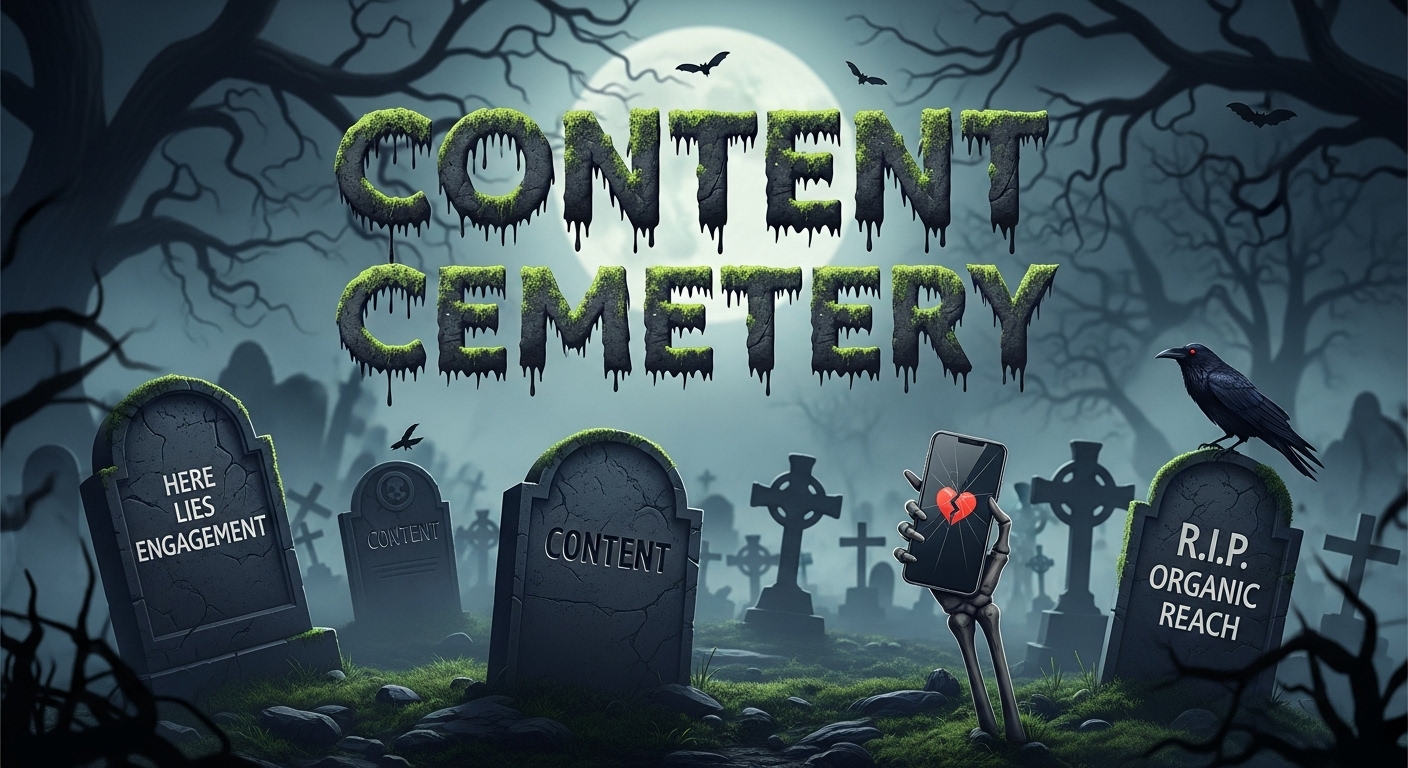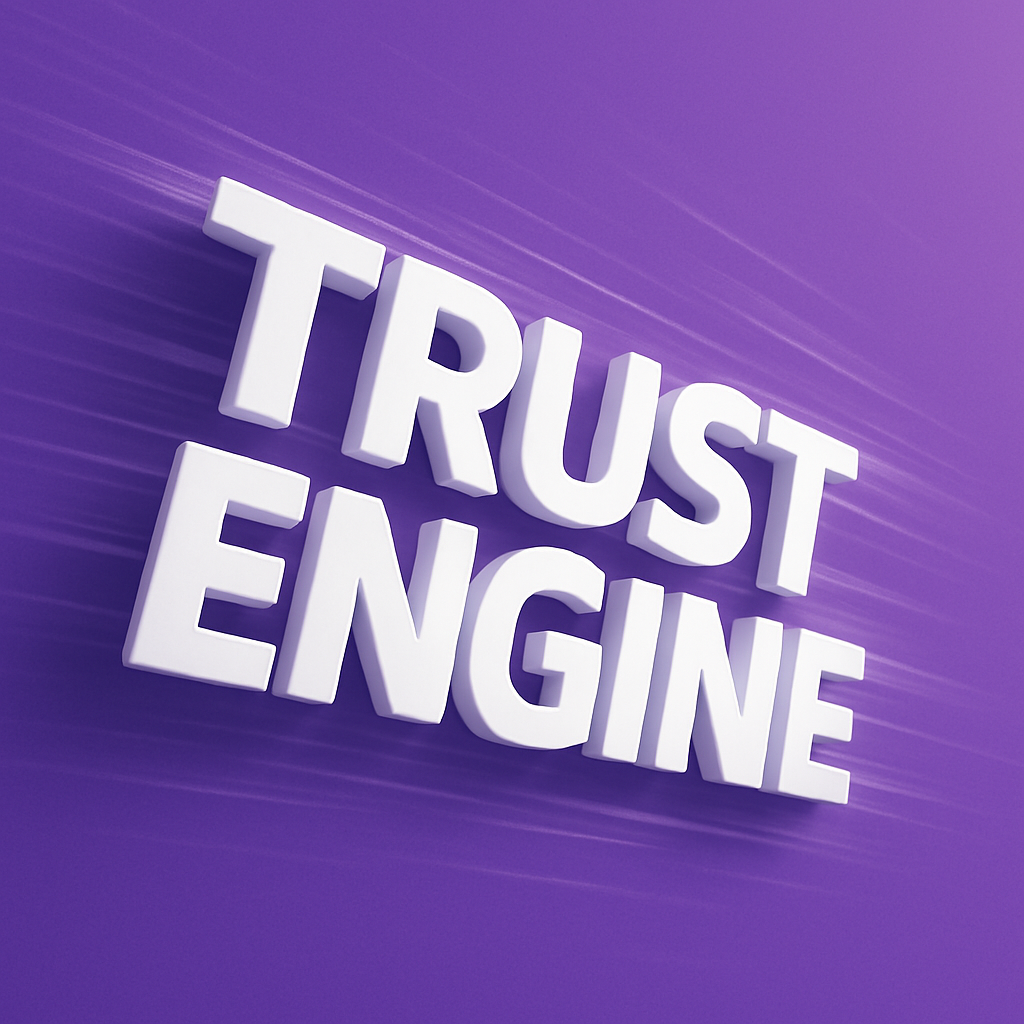
How to turn your website from a "content cemetery" to a growth engine

Marketers have long enjoyed the old cliche that a company’s website is the company or brand’s digital “front door.” All too often, though, that front door opens onto a neglected morass of old blog posts, unused resources, and undiscoverable assets. Websites risk becoming “cemeteries of content” filled with assets that once had purpose (or at least were intended to) but are now invisible, outdated, or irrelevant.
It’s not hard to see why this happened. For the past decade-plus, marketers have been bombarded with new channels, from platforms like TikTok and Discord to rising ad formats and mediums like connected TV. Websites were easy to overlook beyond the occasional redesign.
But with the rise of generative AI, that “content cemetery” can become a haunted nightmare. In large language model (LLM) search experiences, brands can’t rely solely on SEO keywords to surface their best work. Today’s consumers are arriving on sites through AI-generated referrals, citations, and summaries. In many cases, they’re bypassing traditional landing pages altogether.
Knotch’s research shows that journeys from LLM citations are twice as scattered as traditional paths, yet they convert faster (three days vs. nine) and drive 1.6 times more engagement with high-value actions. That means website content, paradoxically, carries more weight than ever before.
So how can brands make sure their websites are up to the task? At Knotch, we recommend that brands have a formal learning agenda that creates a constant and persistent approach to website performance improvement. This will keep you accountable and on track.
Here’s what you should be monitoring and adjusting:
- Keep a watchful eye on outdated content.
Much like a well-kept garden, a website needs pruning. Your marketing team should be conducting regular audits to identify outdated, duplicative, or irrelevant assets. Ask: Does this piece still deliver value? Would we be comfortable if it were cited in an LLM response today? Removing, consolidating, or updating low-value content not only improves user experience but also signals freshness and authority to search algorithms.
Dig deep: Old pages that have long since been delinked from the homepage or even removed from discoverability by traditional search engines can still surface in an AI search. In this situation, you run the risk of the LLM mistaking a long-deprecated feature or discontinued product for a core part of your offering. - Make sure to optimize for both humans and machines
Historically, “content optimization” has been synonymous with “SEO.” This meant that many pages were never really meant to be discovered by humans – or by bots any more sophisticated than Google’s search algorithm. Today, keyword strategy needs to be balanced with clear, engaging storytelling; providing structured data for algorithms while delivering genuine utility to humans. Brands that win will write with both in mind.
Increasingly, that also means considering how LLMs parse, summarize, and cite information. The basic principle is that LLMs are looking for detailed answers to specific questions. Consider “chunking” your content, breaking into sections that help distill complex subjects into individual components. Clear structure, authoritative tone, and well-labeled sources increase the chances that AI systems will surface your content accurately…and direct valuable traffic your way. - Understand the realities of the new audience journey
In Knotch’s research, we’ve found that conversions are influenced across a “missing middle” of sessions and content interactions. Digital customer journeys have never been truly linear, but today they’re further muddled by visits to review sites, ChatGPT comparisons of comparable products, a long scroll on a brand’s Instagram account, and more. These additional touchpoints may involve multiple visits to a brand’s website, often to very different pages on it. But an LLM search can rocket a consumer right out of that “missing middle” and onto a path to a quick purchase.
To prevent content from fading into obscurity, brands need analytics that connect the dots across these scattered visits. Understanding how content contributes to eventual conversions – even if it’s not the final touch – helps marketers prioritize updates and investments. - Optimize your content beyond words
With AI-generated search results often directing traffic straight to niche or deep pages, every piece of content is potentially your landing page. While this has, technically, always been the case, LLMs have made it unavoidable. No page is too small for high-quality UX: clear navigation, strong CTAs, mobile responsiveness, and context that orients a visitor who may have skipped the homepage entirely.
Don’t let pages languish with an outdated design or brand identity just because you figure few people will ultimately visit them. Err on the side of more rather than less information on individual pages because there’s no guarantee that a person who arrives on them will have seen your homepage first. In other words, think less about a singular “front door” and more about a network of side entrances that all need to feel welcoming. - Use feedback loops to measure the value of your content
The best way to keep your site alive is to listen to its visitors, both human and machine. Build a feedback loop that measures engagement (time on page, scroll depth, recirculation rate), perceived value (say, how actionable and easy-to-find information is), and business impact (conversions, subscriptions, downloads). Use those insights, which you can gather easily from Knotch One and act upon with AgentC, to continuously refresh and reframe content. Content that demonstrates ongoing relevance avoids the fate of being buried and forgotten.
Websites don’t have to be content cemeteries. With thoughtful upkeep, they can be dynamic ecosystems – sources of knowledge for algorithms, destinations of value for humans, and catalysts for meaningful business outcomes. As audience discovery evolves in the LLM era, brands that embrace these practices will ensure their websites remain vibrant, discoverable, and full of life.
Published October 20, 2025
Become a thought leader
Become a thought leader
Trusted by the largest (and now smartest) brands in the world.
“Before Knotch we did not understand what content was driving business results. Now we understand which content moves the needle. Knotch’s cohesive reporting and insights paint a real picture of what’s happening on our website instead of the patchwork quilt that comes from a Google Analytics approach. With Knotch we have been able to re-prioritize ad spend, route better leads to our SDR team, and inform our content development initiatives.”

"The Knotch platform ensures that we deliver high-performing content tailored to young home shoppers, enhancing their experience and driving better business outcomes.”

"Our partnership with Knotch has been highly successful, empowering us to leverage data-driven insights and refine our content strategy.”








